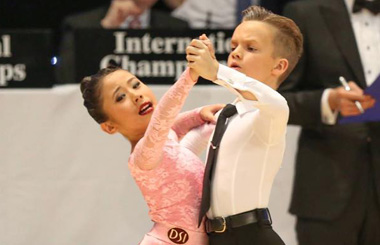Lost for words
Computerization is affecting our ability to handwrite Chinese characters. It is a sad trend that cannot be reversed. But the upside is higher efficiency in the use of the language as the bar for literacy keeps getting lowered.
Amidst the numerous incarnations of singing contests that hog China's television screens, one show stands out for its originality (it's not based on an imported program format) and also for its educational value. It is a show about the dictation of Chinese characters. Surprisingly, it is fun and full of suspense as well.
The concept is simple: Groups of students from various provinces compete with each other by handwriting Chinese words, or characters, that the host reads out to them. They can erase what they have written until they submit it or time is up. The writing process is projected so both the live audience and the TV audience are witness to it. What's more, members of the live audience can participate by writing on their own pads.
 |
|
Pang Li / China Daily |
The result is shocking: Many words that are hardly difficult become stumbling blocks for the youngsters, whose failure to write correctly sees them ejected from the competition.
The adults in the audience do even worse, with much lower scores, on average, than the formal contestants on the stage.
If this is an accurate gauge of Chinese people's ability to write Chinese words, it is clear we are losing the skill fast. By"writing" I refer to handwriting only. The culprit, as everyone knows, is keyboard input, which has taken away the necessity to memorize all the strokes of Chinese characters. What has made writing so much easier is also chipping away at a foundation that many believe essential to be an educated person in China.
Now I have to provide a little background information for those not familiar with the Chinese language, the written one in this case. Unlike Western languages, the Chinese character is a pictograph, not pronounceable by the way it is written — even though it may contain an element for the sound. Each character is a picture for which you need to remember a series of strokes to write it.
Conventional wisdom suggests some 3,000 characters must be mastered to be able to write Chinese and a typical student spends much of his or her elementary school years training in this.
The desire to simplify this writing system is almost intuitive. Chinese teachers often dole out penalties to poorly performing students such as ordering them to write their name in characters 100 times. For this punishment, anyone called Ding Yi is the luckiest because this name requires just three strokes for both the given and family names. At the other extreme there can be 30 strokes in a name.
Nowadays, it is common for authors, when signing hundreds of autographs in one sitting, to adopt a cursive style of calligraphy that allows you to skip and combine strokes.
But for students, this simplified writing style isn't allowed and in fact would be regarded as something akin to a spelling mistake.
|
 |
 |






















